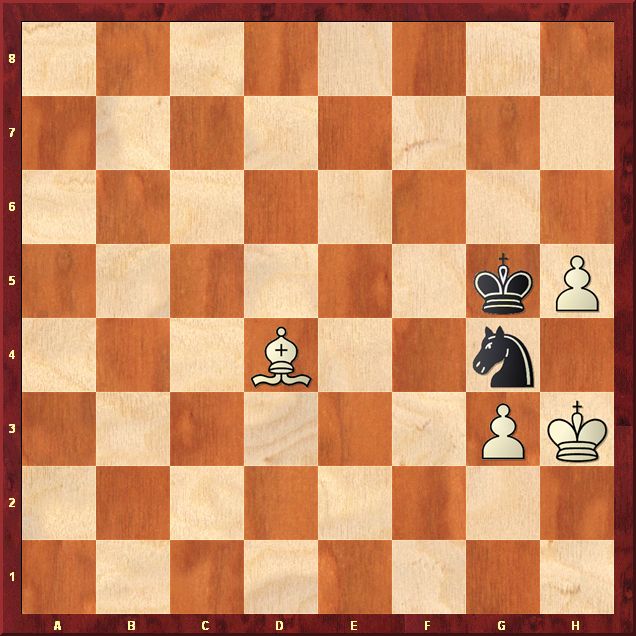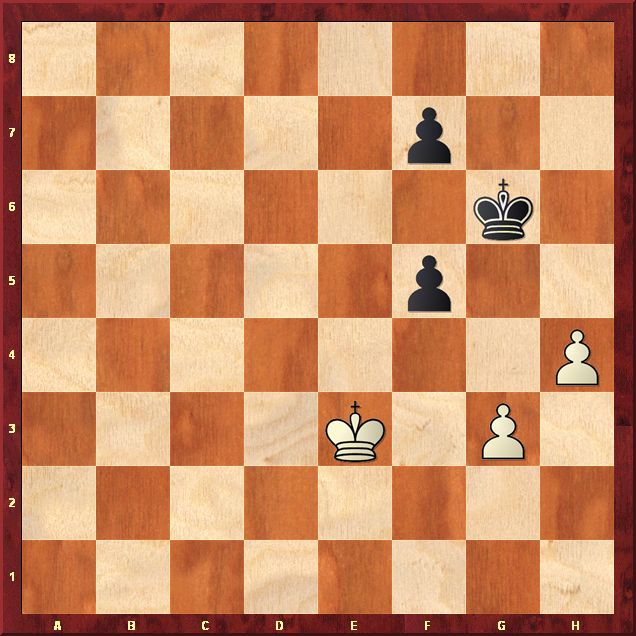In ice hockey, a two-goal lead is the worse to have. Two good shots and the game is tied. It is worse in chess: one small slip and you can not only turn a winning advantage into a draw -- you can lose the game. Nobody is immune to blunders, not even the champions.
It is a common theme in John Nunn's excellent new book Nunn's Chess Endings, Volume 1. The English grandmaster gives plenty of examples where the mighty falter during play or in their analysis and judgment. The endgame virtuoso, the late world champion Vasily Smyslov, comes to a wrong conclusion about his own game. The world championship candidate and one of the foremost chess endgame experts, Yuri Averbach, avoids a winning line because he wrongly thinks it only leads to a draw. The world champion Garry Kasparov walks the wrong way with his King and throws away all his previous hard work.
Averbach did not convert a two pawn advantage against the Slovakian IM Jan Sefc in the tournament in Dresden 1956. The Russian GM avoided a variation, leading to a position of our first puzzle.
John Nunn

White to play and win
Solution from Averbach-Sefc by John Nunn
White: Kh3,Bd4,P:g3,h5; Black: Kg5,Ng4
1.h6! (Running for the Queen, the h-pawn deflects the black knight to the wrong square.) 1...Nxh6 (1...Kxh6 2.Kxg4 wins.) 2.Be3+ Kh5 3.Bxh6 Kxh6 4.Kh4! (White still has to be precise. The careless 4.Kg4? only draws after 4...Kg6!) 4...Kg6 5.Kg4 White has the opposition and wins.
Note that in the replay windows below you can click on the notation to follow the game.
The future looked bright for the 13-year-old Etienne Bacrot in 1996. His coach, GM Iossif Dorfman, even thought the French boy was born to dethrone Kasparov. At 27, Bacrot is one of the top French grandmasters, but never played a match for the world title. Kasparov won brilliantly against Bacrot in Sarajevo in 2000 and was close to victory in Moscow in 2004.
From Kasparov-Bacrot
How can White win?
Solution from Kasparov - Bacrot
White: Ke3,P:g3,h4; Black: Kg6,P:f5,f7:
66.Kf3! (Incredibly, by not marching his King to the square f4, White gets Black into trouble. The immediate 66.Kf4? only draws after 66...f6! 67.h5+ [ Or 67.Ke3 Kh5 68.Kf3 Kh6 69.Kf4 Kg6 and White can't make a progress.] 67...Kh6! [Not 67...Kxh5? 68.Kxf5 and White wins.] 68.Kxf5 Kxh5 draw.
Kasparov played 66.Kd4? and after 66...Kh5 the players agreed to a draw, for example 67.Ke5 Kg4 68.h5 Kxh5 69.Kxf5 f6! 70.Kxf6 Kg4 draws)
66...Kf6 (White wins either after 66...f6 67.Kf4; or after 66...Kg7 67.Kf4 Kf6 68.h5!) 67.Kf4 Kg6 (Or 67...Ke6 68.Kg5 and the h-pawn has a free ride.) 68.Ke5 f6+ 69.Ke6 and White wins a pawn and the game.
Note that in the replay windows below you can click on the notation to follow the game.
John Nunn shows in his new book that magical twists and turns can be found in real games and does not include any endgame studies. He points out important ideas which occur often in practical play. As an excellent attacker in his prime, Nunn stresses the importance of precise play and tactics in the endgames. The first volume includes everything without the rooks. The all-rook volume two is scheduled to come out in the fall. Both volumes build on Nunn's previous book Understanding Chess Endgames, a wonderful presentation of 100 key endgame ideas. Nunn's trilogy is published by Gambit Publications and should be a perfect addition to the library of any tournament player.
